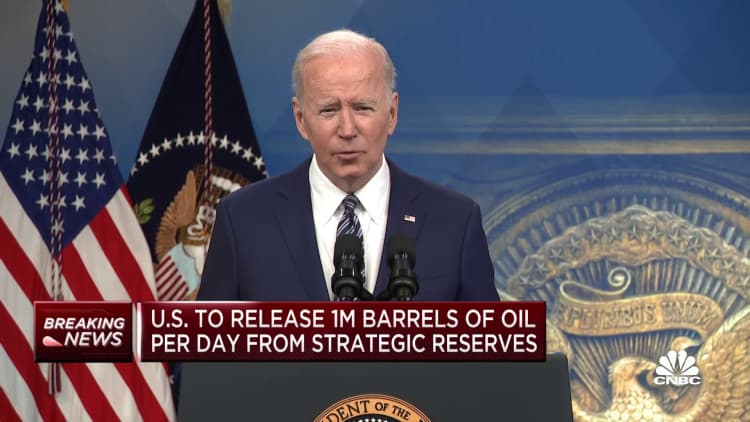President Joe Biden's administration on Friday unveiled tougher fuel economy standards for vehicles reversing his predecessor Donald Trump's rollback of U.S. regulations aimed at improving gas mileage and cutting tailpipe pollution.
The National Highway Traffic Safety Administration (NHTSA) is announcing it will boost fuel efficiency requirements by 8% for both the 2024 and 2025 model years and 10% in 2026. That's slightly more aggressive than the agency's proposal outlined in August.
The new rules are expected to reduce consumer fuel costs by $192 billion for new vehicles sold by 2030. The administration is eager to make the case that regulatory rules will prod automakers into building more efficient and save consumers money at a time of near record gas prices.
The rules will be challenging for automakers to meet, which will need to spend billions to make more efficient models.
Under Trump, the government in March 2020 rolled back fuel economy standards that had been set under his predecessor Barack Obama to require only 1.5% annual increases in efficiency through 2026. Obama had required 5% annual increases.
The Environmental Protection Agency (EPA) in December finalized its stricter vehicle emissions requirements that are parallel to the NHTSA rules. The EPA said its rules will result in 3.1 billion tons of avoided CO2 emissions through 2050. Major automakers on Wednesday backed the EPA's revisions over challenges brought by some states and some ethanol groups.
The EPA rules would result in a fleetwide real-world average of about 40 miles per gallon in 2026 compared with 32 mpg under the Trump rules. The NHTSA rules result in about the same in real-world figures.
NHTSA on Sunday said it reinstated a sharp increase in penalties for automakers whose vehicles do not meet fuel efficiency requirements for model years 2019 and beyond. The decision was a victory for Tesla that could cost other automakers like Chrysler-parent Stellantis hundreds of millions of dollars or more.


